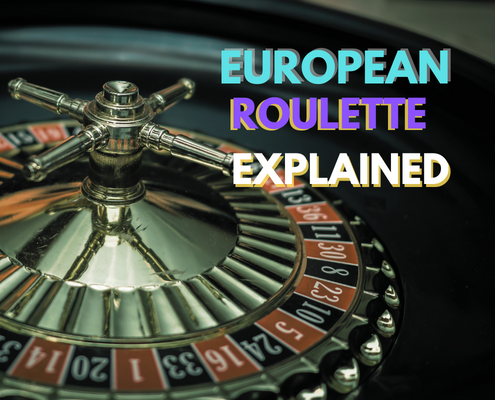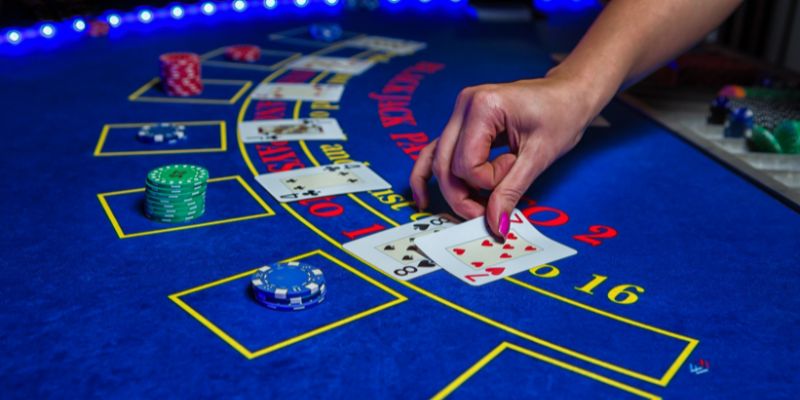A Complete Guide to European Roulette Rules, Strategies, and How To Win
Understanding European Roulette Rules
European Roulette is a popular casino game that is played on a wheel with 37 numbered pockets (1-36 and a single 0). The objective of the game is to correctly predict where the ball will land on the wheel.
Players can place a variety of different types of bets in European Roulette, including:
- Inside bets: These are bets placed on specific numbers or combinations of numbers on the roulette table. Examples include straight-up bets (placing a chip on a single number), split bets (placing a chip on the line between two numbers), street bets (placing a chip at the end of a row of numbers), and others.
- Outside bets: These are bets placed on larger groups of numbers or specific characteristics of the numbers on the roulette table. Examples include betting on red or black, odd or even, or high or low numbers.
The game begins with players placing their bets. Once all bets have been placed, the dealer will spin the wheel and drop the ball. Once the ball comes to a stop, the dealer will announce the winning number and pay out any winning bets.
It’s important to note that European Roulette has a lower house edge than American Roulette, which has an additional pocket (00) on the wheel. This means that European Roulette is generally considered to be a more favorable game for players.
As a general advice, it’s always better to place outside bets because they have a better chance of winning and a lower payout. Also, if you’re playing for fun, it’s better to set a budget for yourself and stick to it, so you don’t end up losing more than you can afford.
The European Roulette Wheel
The European Roulette wheel is a crucial part of the game. It is made up of 37 numbered pockets, with numbers ranging from 1 to 36 and a single green pocket numbered 0. The numbers on the wheel are not placed in numerical order, but are rather randomly distributed. The pocket 0 is green in color and it is located at the top of the wheel, opposite from number 32.
The numbers on the wheel alternate between red and black, with the exception of the green 0 pocket. This color coding is used to help players easily identify and place their bets on the roulette table.
The European roulette wheel is spun by a dealer (or croupier) who drops a small ball onto the spinning wheel. The ball eventually loses momentum and falls into one of the numbered pockets, determining the winning number.
It’s important to note that the European roulette wheel is designed to be completely random and unbiased. The pockets are shaped and sized in such a way that the ball is equally likely to land in any of the pockets, regardless of its previous landing spot. This ensures that the game is fair for all players.
The House Edge
The house edge in this version is 2.70%. This is because the game has 37 pockets on the roulette wheel, with numbers ranging from 0 to 36. The number 0 is colored green, and the other numbers are split evenly between red and black. The numbers are also not arranged in numerical order on the wheel.
The house edge is the mathematical advantage that the casino has over the players in a game. The European Roulette house edge comes from the fact that there is a pocket for the 0, which is not covered by any of the betting options available to the players. If a player places a bet on a single number and the ball lands on 0, the player loses their bet. This gives the casino a built-in advantage over the players.
It is important to note that the European Roulette house edge is not the same as the payout ratio. The payout ratio for this version is 35:1 for a single number bet, however, the probability of winning this bet is 1 in 37.
In order to minimize the European Roulette house edge and increase the chances of winning, players can opt for outside bets such as red/black, even/odd or high/low. These types of bets have a lower payout ratio, but the probability of winning is higher.
It is also important to note that players should set a budget for themselves and stick to it. Gambling should be a form of entertainment and not a way to make money.
Types of Bets in European Roulette
Here are some of the most common types of bets in this version, though other options are available:
- Inside Bets: These are bets placed on specific numbers or small groups of numbers on the roulette table. They include Straight Up bets (placing a chip on a single number), Split bets (placing a chip on the line between two numbers), Street bets (placing a chip at the end of a row of numbers), and Corner bets (placing a chip at the intersection of four numbers).
- Outside Bets: These are bets placed on larger groups of numbers, such as Red or Black, Odd or Even, or Low or High.
- Column Bets: These are bets placed on one of the three columns of numbers on the roulette table.
- Dozen Bets: These are bets placed on a group of 12 numbers at a time, such as the first dozen numbers (1-12), the second dozen numbers (13-24), or the third dozen numbers (25-36).
- Orphelins: A bet placed on the numbers not covered by the tiers and voisins.
- Tiers: A bet placed on a group of numbers from the opposite side of the wheel of the zero.
- Voisins: A bet placed on the numbers that are neighbors of zero.
It’s important to note that different types of bets have different payouts. For example, a Straight Up bet on a single number has a higher payout than a Column bet on a group of numbers. It’s also important to note that each bet has a different probability of winning, for example the probability of a single number to come out is 2.7% while the probability of a color to come out is 48.6%.
Strategies for Winning
There are several strategies that players can use to try and increase their chances of winning. One popular strategy is the Martingale System, which involves doubling your bet after every loss in order to eventually recoup your losses and make a profit. This strategy can be effective, but it also comes with the risk of reaching the table’s maximum bet limit and losing a large amount of money.
Another strategy is the D’Alembert System, which involves increasing your bet by one unit after a loss and decreasing it by one unit after a win. This strategy is less aggressive than the Martingale System, but it also tends to result in smaller profits.
Players can also use the Labouchere System, which involves using a predetermined sequence of numbers to determine the size of your bets. With this strategy, players cross off numbers from the sequence after a win and add them after a loss. This strategy can be customized to suit a player’s preferred level of risk.
Another popular strategy is called the Fibonacci System, which involves using a specific sequence of numbers to determine the size of your bets. In this strategy, players add the last two bets together to determine the next bet. This strategy is less aggressive than Martingale but also tends to result in smaller profits.
It’s important to note that these strategies are not guaranteed to lead to a win and they all come with the risk of losing money. It’s essential to always set a budget and stick to it, to avoid spending more than you can afford to lose.
Common Mistakes to Avoid
There are several common mistakes that players should be aware of and try to avoid for this version. These include:
- Not understanding the rules and betting options: Before sitting down to play, it’s important to have a good understanding of the rules of the game and the different types of bets that can be made. This will help you make more informed decisions and improve your chances of winning.
- Chasing losses: It’s natural to want to try to recoup losses quickly, but this can lead to impulsive and irrational betting decisions. Instead of trying to win back lost money all at once, it’s better to accept the loss and set a budget for future sessions.
- Not managing your bankroll effectively: Set a budget for yourself before you start playing and stick to it. This will help you avoid overspending and keep your losses to a minimum.
- Not paying attention to the table limits: Make sure you understand the minimum and maximum bets allowed at the table before you start playing. This will help you avoid making bets that are too large or too small.
- Not understanding the house edge: European Roulette has a lower house edge than American Roulette, which means that the odds are slightly better for the player. However, it’s still important to remember that the house always has an advantage and that there is no surefire way to guarantee a win.
- Not taking advantage of bonuses and promotions: Many online casinos and brick-and-mortar casinos offer bonuses and promotions that can help you increase your bankroll and improve your chances of winning. Be sure to take advantage of these opportunities when they’re available.
Live vs Non-Live Version
There are two main versions that players can choose from: live roulette and non-live roulette.
The live version is played in real time, with a real dealer operating the game. Players can watch the dealer spin the wheel and drop the ball, and they can also interact with the dealer and other players through a live chat feature. This version of the game is considered more immersive and authentic, as it closely replicates the experience of playing in a land-based casino.
The non-live version, on the other hand, is played using a computer-generated simulation. Players interact with the game through a digital interface, and the outcomes are determined by a random number generator. This version of the game is considered more convenient, as it can be played at any time and from any location.
Both versions of offer a similar game play experience, the main difference is that live version has a more social and immersive experience while the non-live version is more convenient and accessible.
Conclusion
In conclusion, European Roulette is a classic game that can be enjoyed by players of all skill levels. With a good understanding of the odds, a solid strategy, and a responsible attitude towards gambling, you can increase your chances of winning while having a great time.




